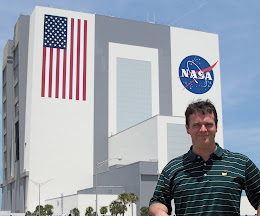NASA astronauts Randy Bresnik and Mark Vande Hei will venture outside through the Quest airlock on Thursday for the first spacewalk beginning at 8:10 a.m. EDT. The duo will to remove and replace a defective latching end-effector on the Canadarm 2 robotic arm.
On October 10, Bresnik and Vande Hei will egress the airlock at about 8:10 a.m. to rotate a pump flow control assembly to prepare it for venting and its relocation in the near future. The astronauts will also replace a station video camera which has a pink discoloration on the lens.
One week later, on October 18, Bresnik and NASA astronaut Joe Acaba will perform a third orbital walk to add a high definition camera, replace another video camera on the Destiny Laboratory, and the two will lube select areas on the station.
Spacewalking preparations began several months ago by Bresnik, Vande Hei, and Acaba, both in the NASA mock-ups, and below the waters of the Neutral Buoyancy Laboratory located next to the Johnson Space Center near Houston.
Take a massive swimming pool, fill it with 6.2 million gallons of water, and throw in a large mock up of the space station into that pool. That's the NBL -- a special training pool which allows selected astronauts to suit up in their spacesuit and work submerged with a near feeling of weightlessness.
The NBL is located inside the Sonny Carter Training Facility, and is a critical training tool for many departments within NASA. Flight directors use the pool to refine spacewalk procedures and develop flight procedures. Teams can also verify hardware compatibility first before launching the equipment into space.
"It's a great way to train, and it's an amazing team sport," said NASA astronaut Victor Glover, a Navy commander and F/A-18 pilot, explained to this aerospace reporter. "What you see requires 30 or 40 people just to put two people into a space suit to train. You have a test director, a camera diver, two safety divers per every space suit, and you have a whole team of folks to make sure you're doing these things safely."
An astronaut will spend seven hours of training in the NBL pool for every hour they are scheduled to spend spacewalking.
Glover added that risks are involved with every spacewalk related to time and physics. One example, he discussed, is when astronauts work on the electrical side of the orbital outpost it is performed while the station is over the night side of the planet. Much like replacing a wall socket at home, the Sun is not generating power to the solar arrays for nearly 40 minutes.
Measuring 202-feet long by 102-feet wide, the NBL pool is loaded with strong filters. The pool's water is recycled every 19 hours, according to Glover, and it is chemically treated to stop bacteria growth. The water's temperature remains between 82° to 88° Fahrenheit to keep NASA support divers, who assist the submerged astronauts for long periods of time, warm and comfortable.
NASA-TV will provide live coverage of each spacewalk beginning at 6:30 a.m. each day.
(Charles Atkeison reports on aerospace and technology. Follow his updates via social media @Military_Flight.)






